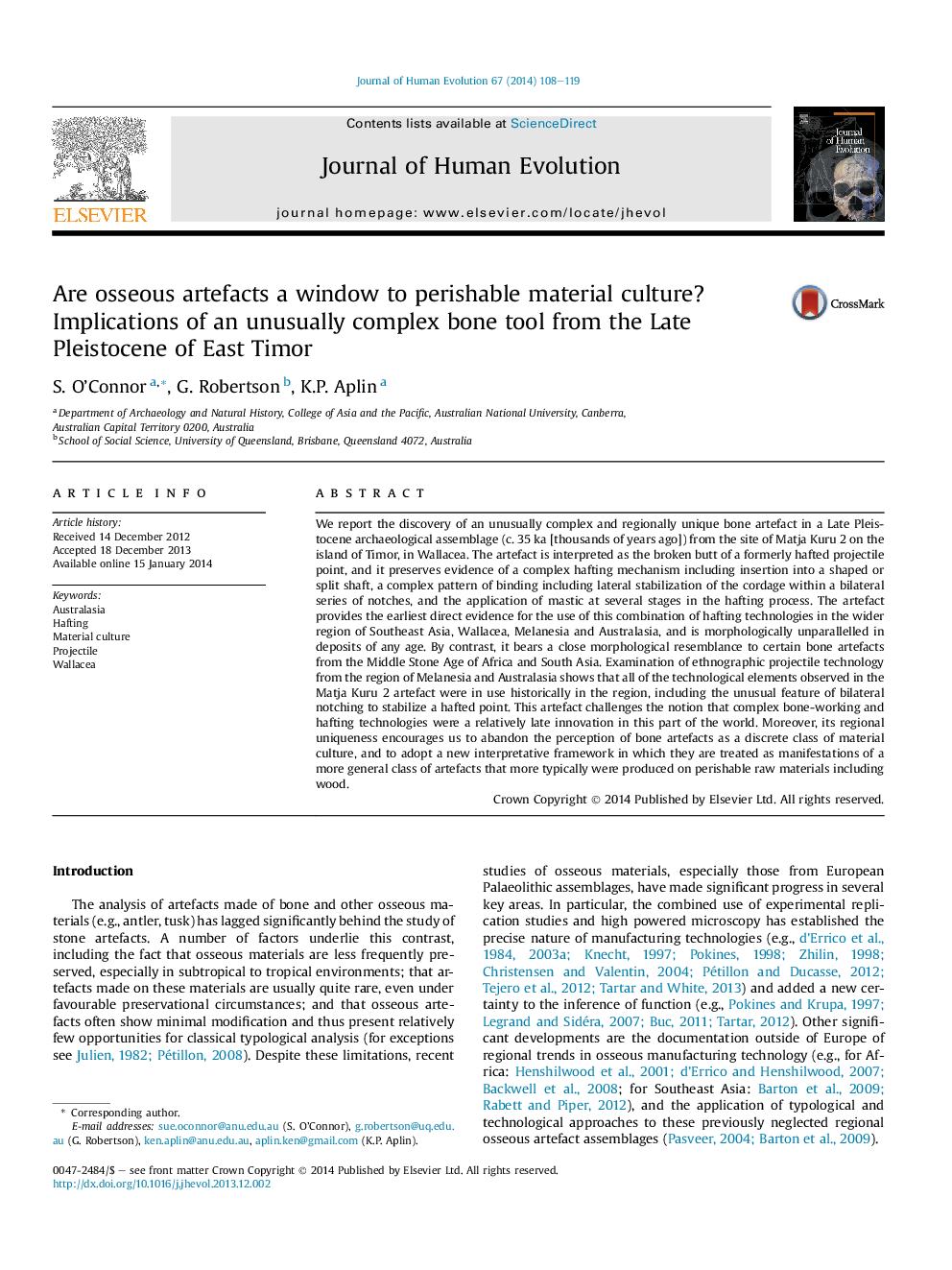| کد مقاله | کد نشریه | سال انتشار | مقاله انگلیسی | نسخه تمام متن |
|---|---|---|---|---|
| 4556199 | 1628182 | 2014 | 12 صفحه PDF | دانلود رایگان |
We report the discovery of an unusually complex and regionally unique bone artefact in a Late Pleistocene archaeological assemblage (c. 35 ka [thousands of years ago]) from the site of Matja Kuru 2 on the island of Timor, in Wallacea. The artefact is interpreted as the broken butt of a formerly hafted projectile point, and it preserves evidence of a complex hafting mechanism including insertion into a shaped or split shaft, a complex pattern of binding including lateral stabilization of the cordage within a bilateral series of notches, and the application of mastic at several stages in the hafting process. The artefact provides the earliest direct evidence for the use of this combination of hafting technologies in the wider region of Southeast Asia, Wallacea, Melanesia and Australasia, and is morphologically unparallelled in deposits of any age. By contrast, it bears a close morphological resemblance to certain bone artefacts from the Middle Stone Age of Africa and South Asia. Examination of ethnographic projectile technology from the region of Melanesia and Australasia shows that all of the technological elements observed in the Matja Kuru 2 artefact were in use historically in the region, including the unusual feature of bilateral notching to stabilize a hafted point. This artefact challenges the notion that complex bone-working and hafting technologies were a relatively late innovation in this part of the world. Moreover, its regional uniqueness encourages us to abandon the perception of bone artefacts as a discrete class of material culture, and to adopt a new interpretative framework in which they are treated as manifestations of a more general class of artefacts that more typically were produced on perishable raw materials including wood.
Journal: Journal of Human Evolution - Volume 67, February 2014, Pages 108–119
